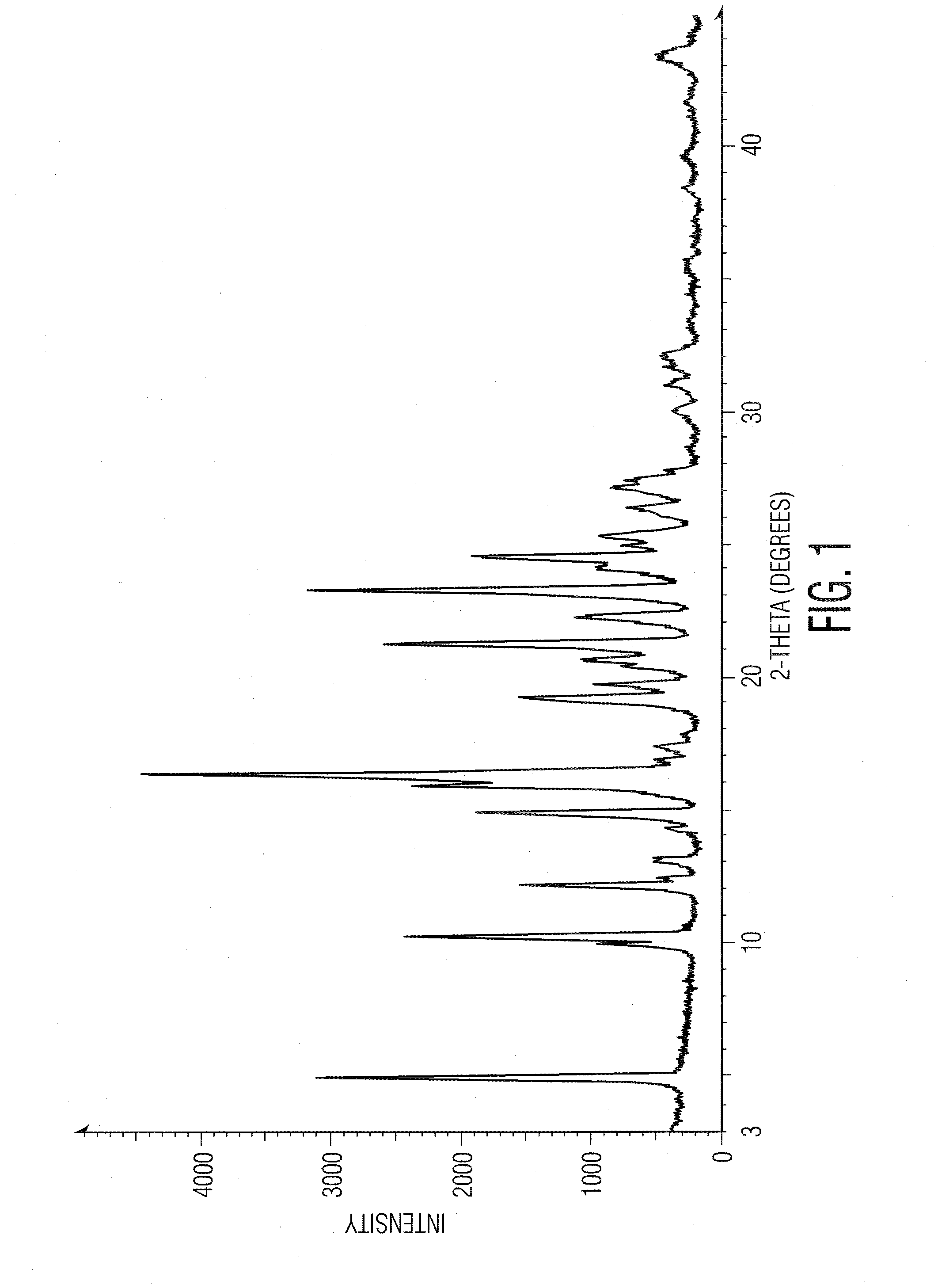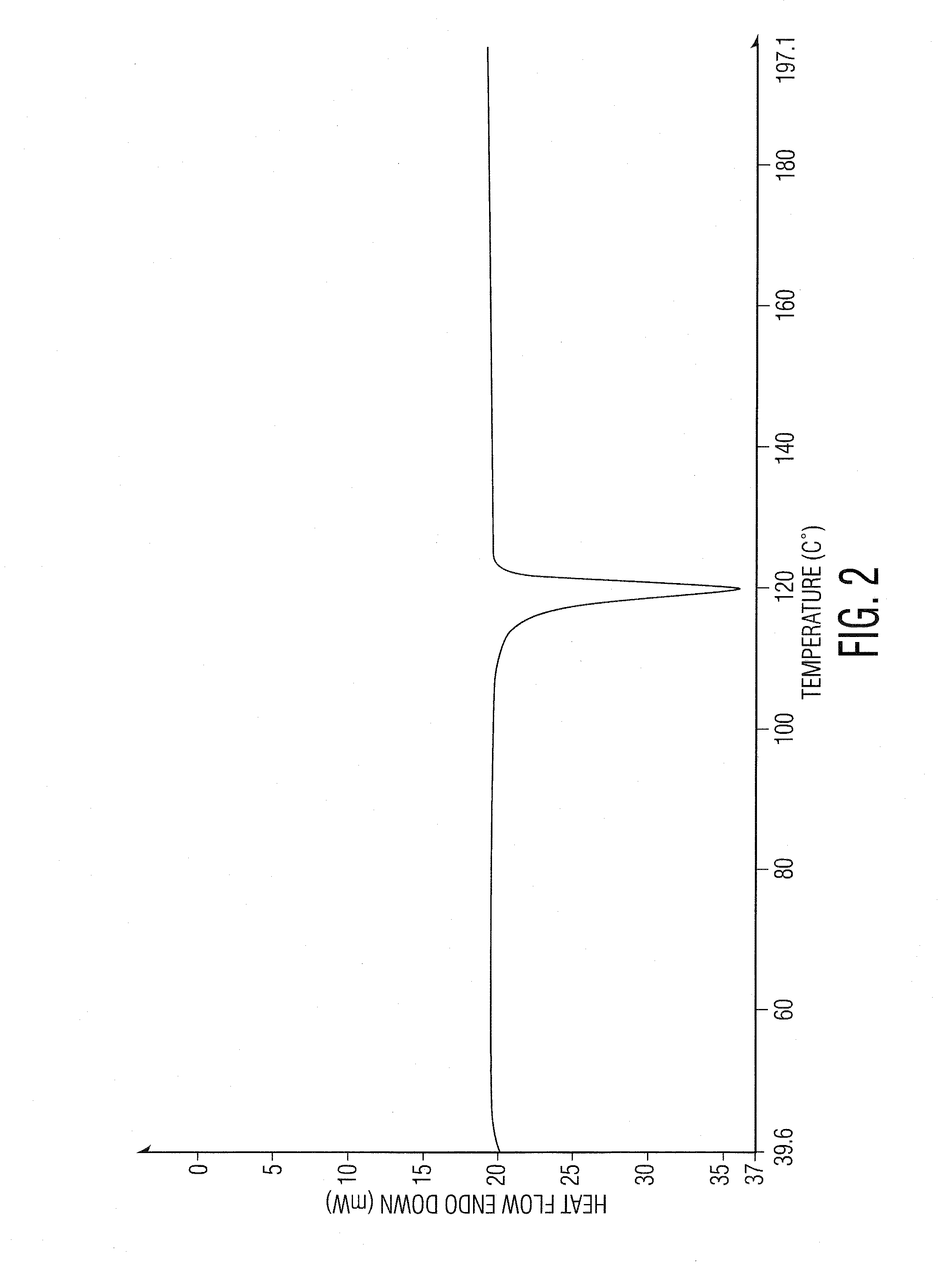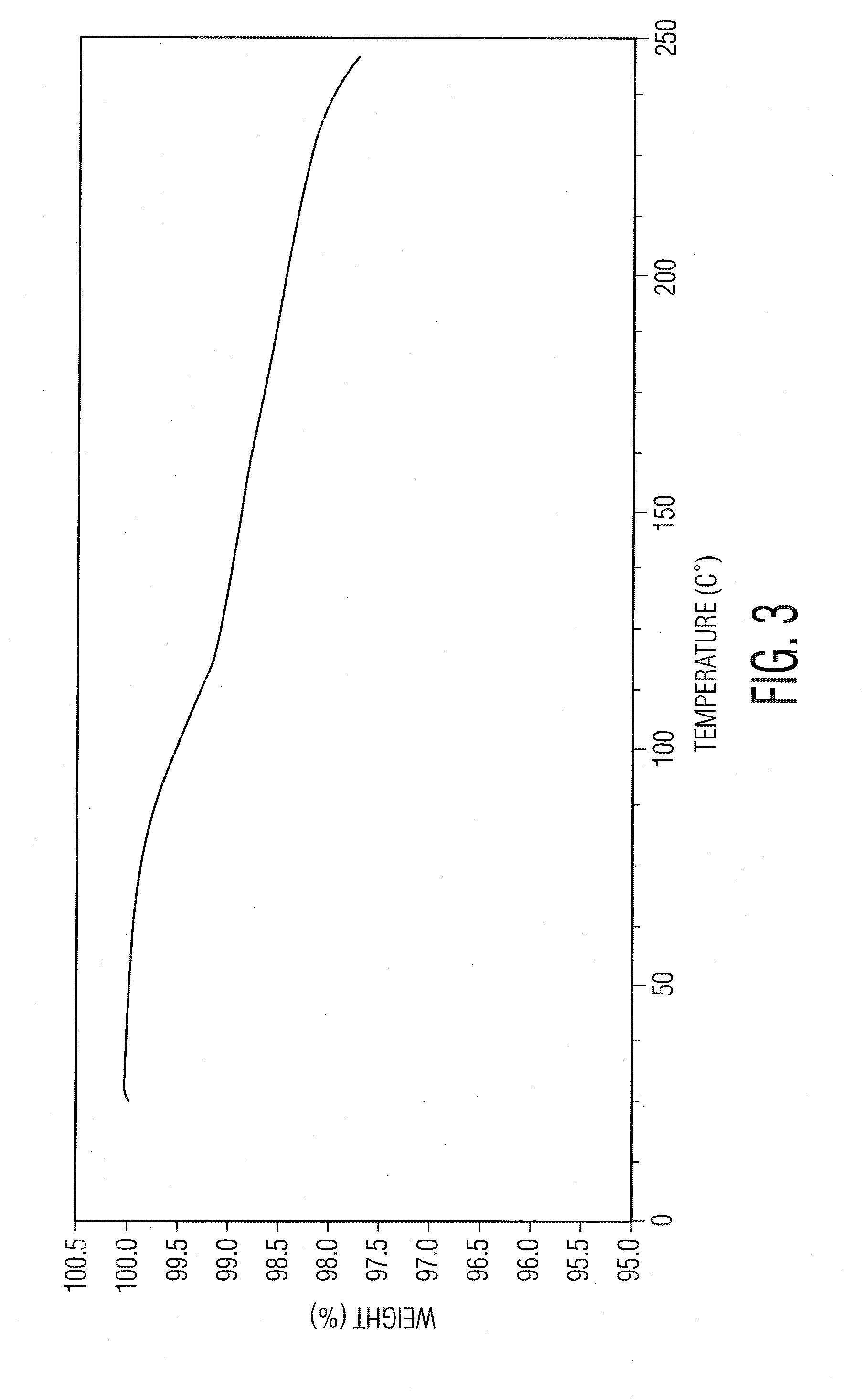Preparation of ranolazine
- Summary
- Abstract
- Description
- Claims
- Application Information
AI Technical Summary
Benefits of technology
Problems solved by technology
Method used
Image
Examples
example 1
Preparation of 1-(2-methoxyphenoxy)-2,3-epoxypropane
2-methoxyphenol (100 g) and water (400 mL) are charged into a round-bottom flask and stirred for 5-10 minutes. A solution of sodium hydroxide (16.1 g) in water (100 mL) is added at 25-35° C. and stirred for 45-60 minutes. Epichlorohydrin (223.5 g) is added at 25-35° C. and the mixture is maintained for 10-12 hours. Layers are separated. Water (400 mL) and a solution of sodium hydroxide (32.2 g) in water (100 mL) are added to the organic layer containing the product. The mixture is maintained at 25-35° C. for 5-6 hours. The layers are separated and 10% sodium hydroxide solution (300 mL) is added to the organic layer containing the product at 25-35° C. The mass is stirred for 20-30 minutes and layers are separated. The organic layer containing the product is distilled at 85-89° C. under reduced pressure, to afford 136.5 g of the title compound.
Purity by HPLC: 98.28%; dimer impurity of Formula IIa: 0.29%; chloro impurity of Formula II...
example 2
Preparation of 1-[3-(2-methoxyphenoxy)-2-hydroxypropyl]piperazine
Methanol (250 mL) and piperazine (96 g) are charged into a round-bottom flask and stirred for 5-10 minutes to dissolve piperazine completely. The solution is cooled to 0-5° C. 1-(2-methoxyphenoxy)-2,3-epoxypropane (50 g) is slowly added and the mixture is maintained at 0-5° C. for 2-3 hours. The mixture is charged into water (200 mL) and stirred at 25-35° C. for 10-15 minutes. The mass is filtered and the filtrate is extracted with dichloromethane (5×50 mL). Acetic acid (32.5 mL) and water (200 mL) are added to the organic layer and stirred for 5-10 minutes, then the layers are separated. The aqueous layer is made basic with aqueous ammonia (55 mL) and then is extracted with dichloromethane (5×50 mL). The solvent from the organic layer is distilled completely under reduced pressure at 40-45° C., to afford 44.2 g of the title compound.
Purity by HPLC: 95.714%.
example 3
Preparation of 2-chloro-N-(2,6-dimethylphenyl) acetamide
2,6-dimethylaniline (100 g) and dichloromethane (500 mL) are charged into a round-bottom flask and stirred for 5-10 minutes. Sodium carbonate (43.8 g) is added and the mixture is cooled to 10-15° C. Chloroacetyl chloride (79 mL) is slowly added at 10-15° C. and the mixture is maintained at 10-15° C. for 60-90 minutes. The temperature is raised to 25-35° C. and water (1000 mL) is added. The organic solvent is evaporated completely at 40-45° C. under reduced pressure. The residue is cooled to 25-35° C. and maintained for 45-60 minutes. The obtained solid is filtered and washed with water (200 mL), then the solid is dried at 70° C., to afford 150 g of the title compound.
Purity by HPLC: 98.95%.
PUM
| Property | Measurement | Unit |
|---|---|---|
| Fraction | aaaaa | aaaaa |
| Density | aaaaa | aaaaa |
| Particle size | aaaaa | aaaaa |
Abstract
Description
Claims
Application Information
 Login to View More
Login to View More - R&D
- Intellectual Property
- Life Sciences
- Materials
- Tech Scout
- Unparalleled Data Quality
- Higher Quality Content
- 60% Fewer Hallucinations
Browse by: Latest US Patents, China's latest patents, Technical Efficacy Thesaurus, Application Domain, Technology Topic, Popular Technical Reports.
© 2025 PatSnap. All rights reserved.Legal|Privacy policy|Modern Slavery Act Transparency Statement|Sitemap|About US| Contact US: help@patsnap.com



